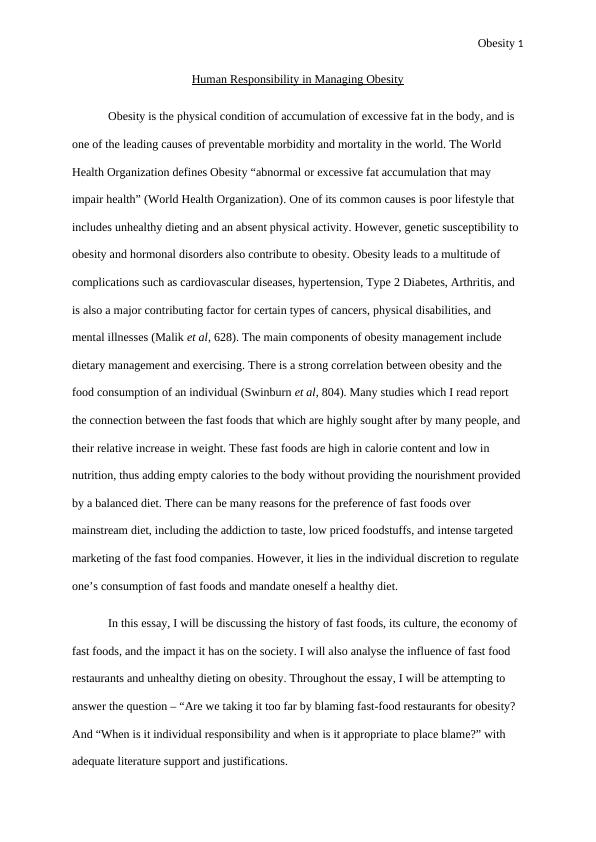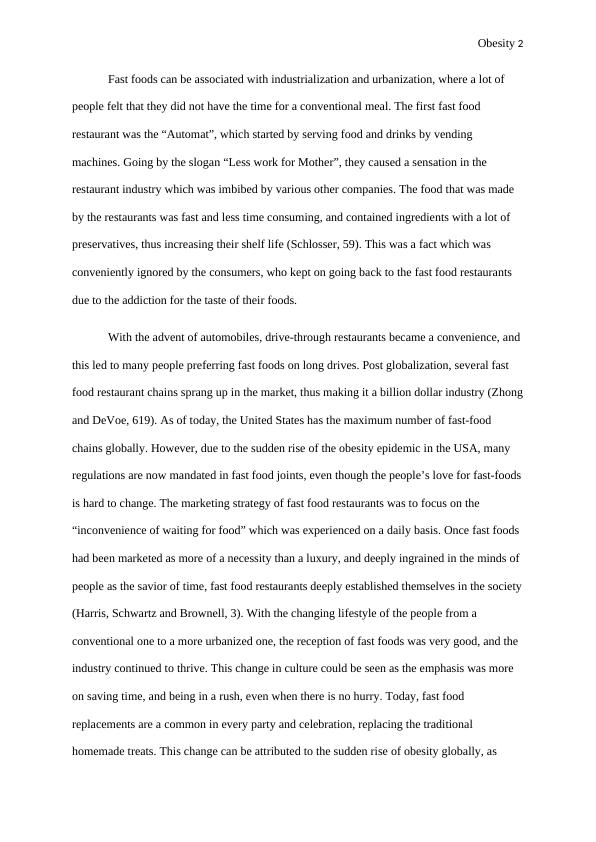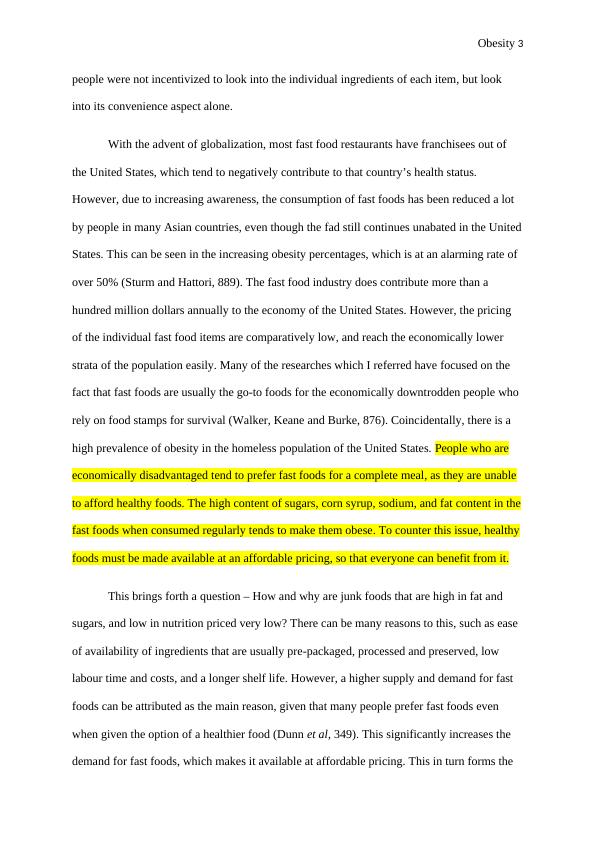Human Responsibility in Managing Obesity and the Impact of Fast Food Restaurants
The assignment requires the completion of an abstract, annotations, and bibliography for an essay. The abstract should outline the main argument and focus of the essay, while the annotations provide a brief description of each source and how it will be used in the essay. The bibliography should include at least six scholarly sources, with three being academic journal articles or books.
Added on 2023-06-03
About This Document
Human Responsibility in Managing Obesity and the Impact of Fast Food Restaurants
The assignment requires the completion of an abstract, annotations, and bibliography for an essay. The abstract should outline the main argument and focus of the essay, while the annotations provide a brief description of each source and how it will be used in the essay. The bibliography should include at least six scholarly sources, with three being academic journal articles or books.
Added on 2023-06-03
End of preview
Want to access all the pages? Upload your documents or become a member.



